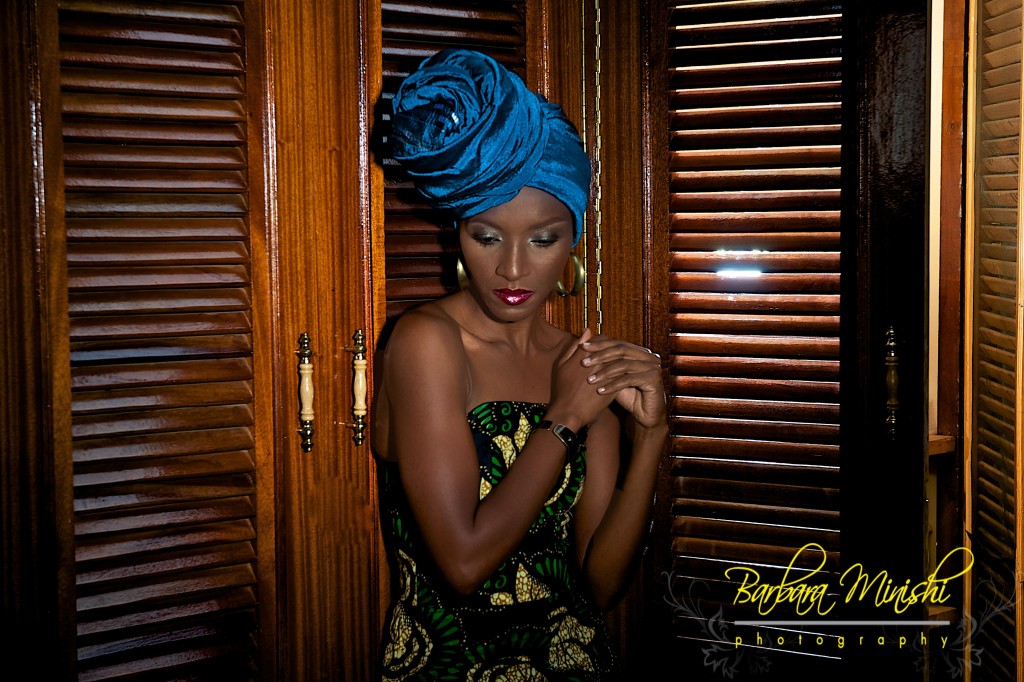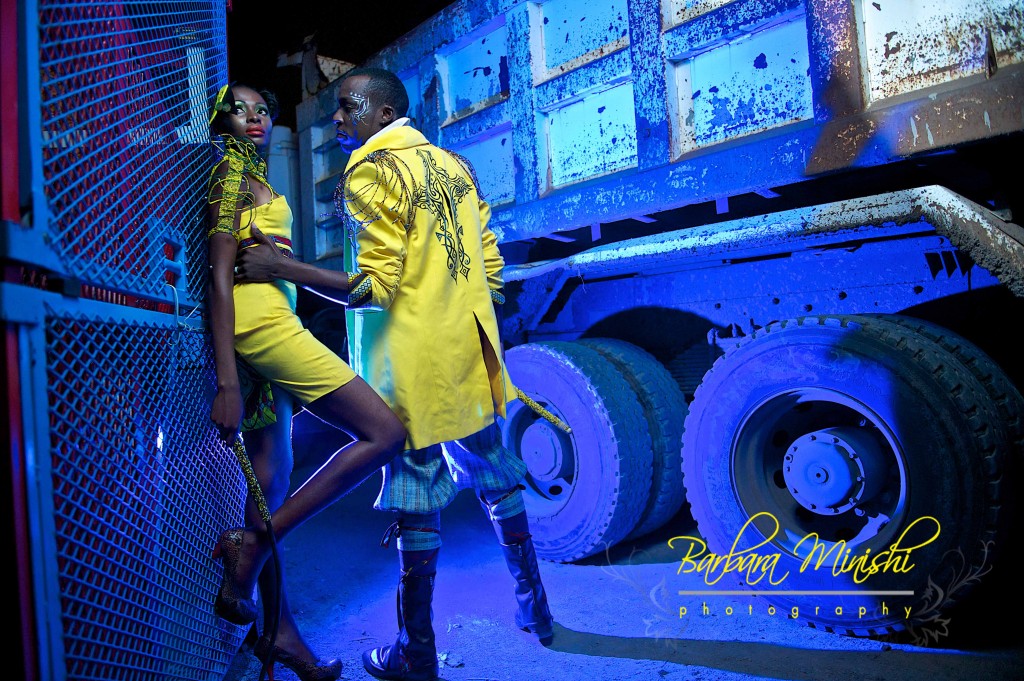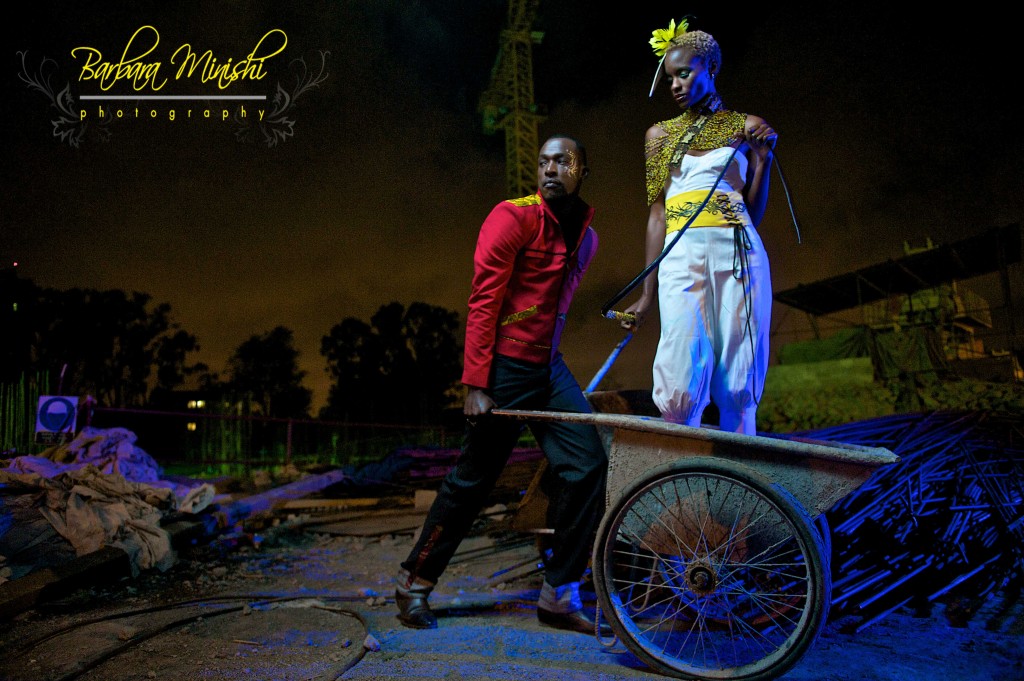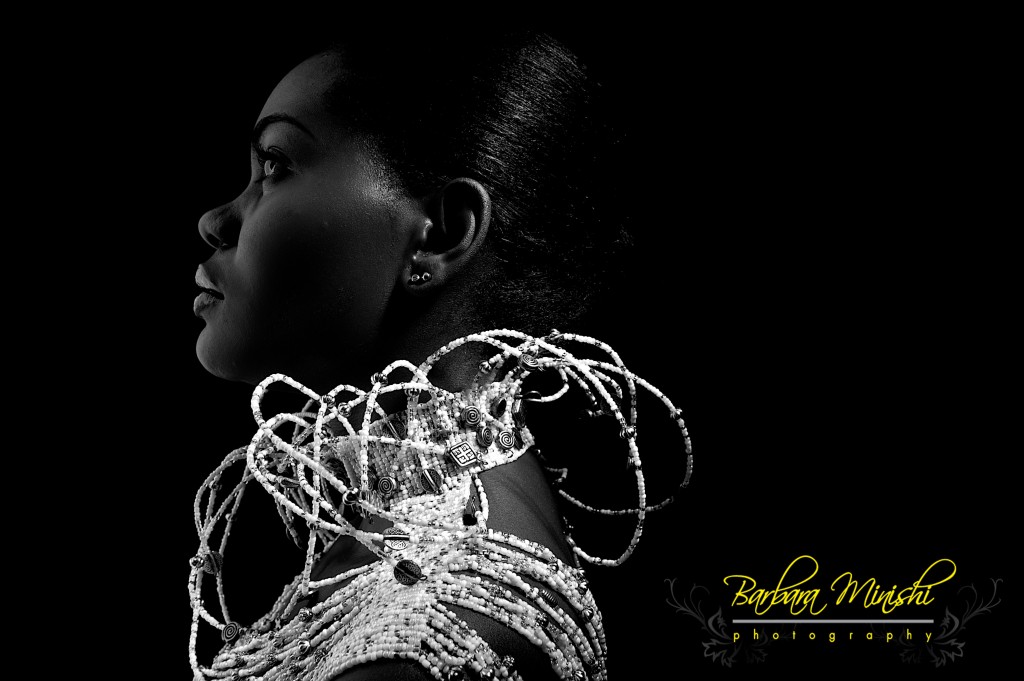African photography is on the rise. From street to art photography, conceptual and documentary to fashion photography, homegrown photographers (not only in the Francophone-African countries) are increasingly stepping up to show their world what they see when they look through the lens, following decades of photographic misrepresentation, or reduction, by observers from outside the continent.
Barbara Minishi shoots from instinct. ‘I immerse myself in my work and stay open to surprises’, she explains. ‘It’s easy to get set in a particular way of doing things, but I find that by following what I’m curious and excited about, and therefore what challenges me, I grow.’ What she’s scared about, the unknown, for instance, galvanises her. ‘That fear, a certain kind of vulnerability is necessary.’
Minishi first came in contact with photography at an early age, when she played around with her father’s camera. At university she primarily shot as a way to avoid participating in other activities, but her work got noticed by the uni’s PR-department and she got hired as a photographer for the school paper. ‘I didn’t realise it was what I really wanted to do as a career until I had a ‘eureka!’ moment a week after graduation. I realised photography was what drove me and held my interest. With it I had a voice and could focus on the subjects I wanted to show the world.’
After an internship with one of the few photographers in Nairobi with whom she shared the same vision with respect to photography, Minishi started shooting her own documentary stories, teaching and challenging herself by just doing it because the schools to which she applied for further training charged steep fees. ‘Photography is a daily learning process that I got on Nairobi’s streets’, says Minishi. ‘I just love watching, observing and noticing, witnessing the ordinary and capturing that. Whether it be in fashion, commercial, documentary, art or portraiture, I relish the act of creating a strong constructive element, the ability to tell stories, the freedom to explore concepts and to challenge clichés.’ Photography is for her Minishi a playground that provides her with an audience and a chance to re-imagine, connect and learn.
‘There are no proper schools of photography here in Kenya, but I feel the concept of visual literacy needs to be incorporated into our educational system as we are all sensitive to visual nuance and sometimes images get misconstrued.’
While she isn’t solely concerned with changing opinions, she does find it odd whenever someone says her images “don’t look Kenyan,” particularly as Kenya is where she grew up and went to school, and she mostly shoots Kenyans in Kenya. ‘Some people get really surprised by the calibre of my work, and by my aesthetic and manner of working, and assume it’s because of foreign influences. However, it’s the opposite that’s true. I focus on different subjects, and I think these do not automatically equate to being in one place. Sometimes getting out of your zone or circle of influence provides the opportunity to look at things from a different way.’
About one thing Minishi is really clear: that her vision is not based on a quest. People can interpret her work however they want, whether they choose to view it as a sort of movement or not. ‘It’s their assumption but not my reality,’ she points out. ‘Maybe it’s because for too long a certain kind of image of Africa was mostly seen and now that there are more and more African photographers doing their own visionary work the rest of the world is starting to notice and calling it as a ‘quest’. I don’t think it is. I believe it’s simply photographers doing what they want to do and more people being receptive to our work.’ As a result she feels people sometimes get stuck discussing and analysing viewpoints about photography from Africa and forget that life is going on. ‘I would rather shoot more quality photographs than talk about the lopsided view. I’m really not concerned about cementing myself in the past.’
Sometimes however the rising photographer feels that she does get stuck in a ‘victim’ mentality as she talks too much about the past and external negative factors. ‘I forget that we are in the present, the now. Of course there’s history, but I can’t carry this around like excess luggage all the time and use it to justify how and why I shoot images. I have learned from it and still do, but don’t want to stay focused on it anymore. Learn from the past and move on, just like you deal with other difficulties. Use it to your advantage!’ No wonder her aim is to broaden her horizon and work worldwide, a goal she’s clearly already taking little steps towards.
Asked how she’d like to portray Kenya, she shrugs: ‘Kenya is what it is. Truth is subjective and my truth is not necessarily that of others. So I don’t want to concoct any kind of image about my country.’ Her opinion about the development and limitations of photography in Kenya are just as clear: ‘Limitations exist based on an individual and how they view the world’, she says. ‘Pondering it doesn’t change anything and with the resources I have I am developing myself as best as I can. Of course I don’t have all the equipment, tools, or access or outreach I want, but this doesn’t stop me. I do what I can with what I have.‘ Whether the continent’s rising economy is being reflected in the popularity of photography in Kenya is for her also a non-issue: ‘It has always been popular in Africa, irrespective of the economical status. Same for Kenya.’
She sees the photography scene growing nonetheless, and she finds it ‘exciting and dynamic’. But she is careful about looking at other photographers’ work, in order to stay unique. ‘The challenge is always to create a cohesive story. Sometimes it happens, other times not.’ That there is a difference in the way situations are portrayed is natural, she believes. ‘Some people choose one angle, others another. I’m not grading another photographers work on what they may have failed to see and then take it on as my responsibility to get another opinion out to the international market.‘ And it’s not solely an African or non-African issue. ‘Both have their own failures, and I know that there are also foreigners who are indeed telling honest and beautiful stories about our continent.’
Minishi stresses the point that her aim is not expressly to be different from other Kenyan or foreign photographers for the sake of standing out. Rather, it’s a lifelong process of exploring her own ‘unique visual DNA’. ‘I believe following what you are attracted to irrespective of what others say or do is the way to work. Of course you can learn from constructive criticism and get inspired by others photographers’ work, but I think it’s brilliant to have our different backgrounds influence our storytelling.’ What that will mean for her in the future is unknown. ‘The present is changing as the seconds tick by’, she says. ‘Therefore I focus on growing now, exploring and developing my vision on Kenya and the way to show this to the outside world though all manners possible.’
Read the original article on This is Africa













